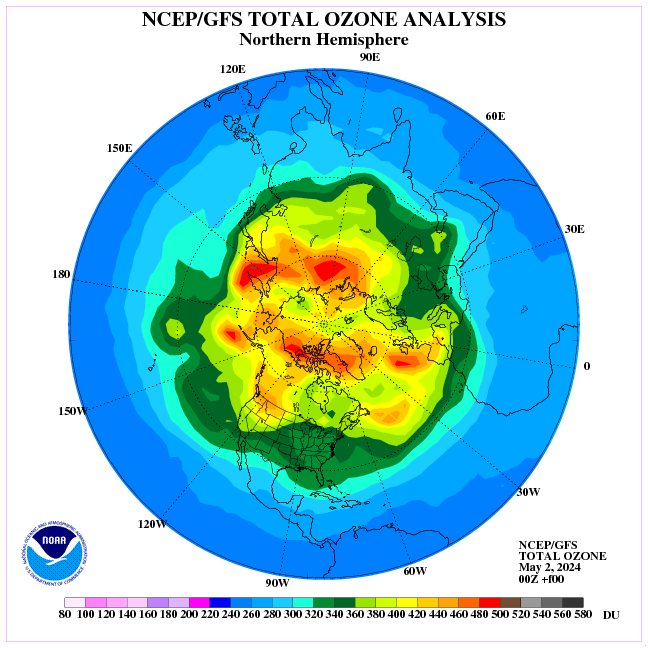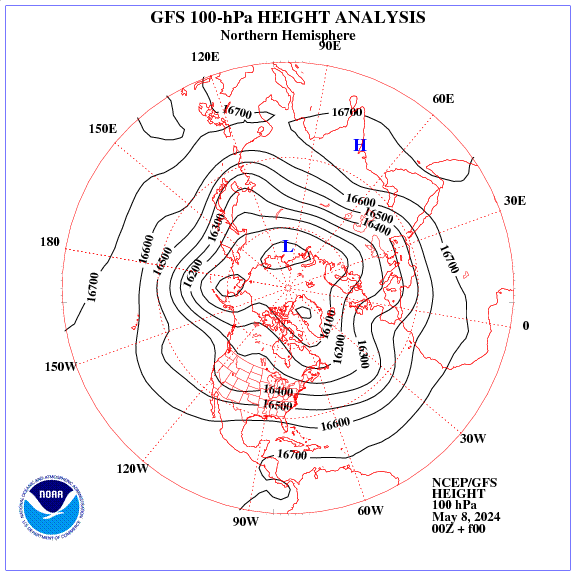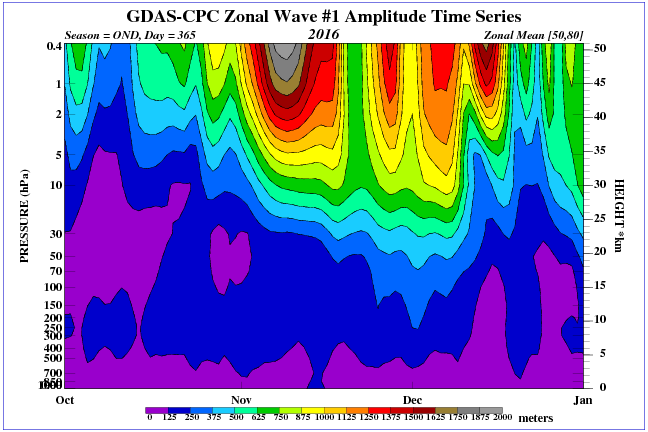
There seems to be plenty going on up there so how it all works, and how that might affect Earth, must be well worth pursuing. Phys.org reporting. [Click on graphic to enlarge]
Scientists from NASA and three universities have presented new discoveries about the way heat and energy move and manifest in the ionosphere, a region of Earth’s atmosphere that reacts to changes from both space above and Earth below.
Far above Earth’s surface, within the tenuous upper atmosphere, is a sea of particles that have been split into positive and negative ions by the sun’s harsh ultraviolet radiation. Called the ionosphere, this is Earth’s interface to space, the area where Earth’s neutral atmosphere and terrestrial weather give way to the space environment that dominates most of the rest of the universe – an environment that hosts charged particles and a complex system of electric and magnetic fields.
The ionosphere is both shaped by waves from the atmosphere below and uniquely responsive to the changing conditions in space, conveying such space weather into observable, Earth-effective phenomena – creating the aurora, disrupting communications signals, and sometimes causing satellite problems.
Many of these effects are not well-understood, leaving the ionosphere, for the most part, a region of mystery. Scientists from NASA’s Goddard Space Flight Center in Greenbelt, Maryland, the Catholic University of America in Washington, D.C., the University of Colorado Boulder, and the University of California, Berkeley, presented new results on the ionosphere at the fall meeting of the American Geophysical Union on Dec. 14, 2016, in San Francisco.
One researcher explained how the interaction between the ionosphere and another layer in the atmosphere, the thermosphere, counteract heating in the thermosphere – heating that leads to expansion of the upper atmosphere, which can cause premature orbital decay.
Another researcher described how energy outside the ionosphere accumulates until it discharges – not unlike lightning – offering an explanation for how energy from space weather crosses over into the ionosphere.
A third scientist discussed two upcoming NASA missions that will provide key observations of this region, helping us better understand how the ionosphere reacts both to space weather and to terrestrial weather.
—
[For more details – see link below]
—
Looking Forward
Though scientists are making progress in understanding the key processes that drive changes in the ionosphere and, in turn, on Earth, there is still much to be understood. In 2017, NASA is launching two missions to investigate this dynamic region: the Ionospheric Connection Explorer, or ICON, and Global Observations of the Limb and Disk, or GOLD.
“The ionosphere doesn’t only react to energy input by solar storms,” said Scott England, a space scientist at the University of California, Berkeley, who works on both the ICON and GOLD missions. “Terrestrial weather, like hurricanes and wind patterns, can shape the atmosphere and ionosphere, changing how they react to space weather.”
ICON will simultaneously measure the characteristics of charged particles in the ionosphere and neutral particles in the atmosphere – including those shaped by terrestrial weather – to understand how they interact. GOLD will take many of the same measurements, but from geostationary orbit, which gives a global view of how the ionosphere changes.
—
“We will be using these two missions together to understand how dynamic weather systems are reflected in the upper atmosphere, and how these changes impact the ionosphere,” said England.
Full report: Revolutions in understanding the ionosphere, Earth’s interface to space






Related: Researchers dial in to ‘thermostat’ in Earth’s upper atmosphere
December 14, 2016
‘A team led by the University of Colorado Boulder has found the mechanism behind the sudden onset of a “natural thermostat” in Earth’s upper atmosphere that dramatically cools the air after it has been heated by violent solar activity.’
Read more at: http://phys.org/news/2016-12-dial-thermostat-earth-upper-atmosphere.html
Update: the GWPF has picked this story up…
http://www.thegwpf.com/scientists-discover-natural-thermostat-that-cools-the-air-in-earths-atmosphere-after-solar-storms/
The gradient of temperature from surface to space is set by gravity, atmospheric mass and insolation from space.
The lapse rate is the observed manifestation of that gradient and it varies greatly between surface and space because the different characterisatics of the various atmospheric layers distort it one way or another.
If the atmosphere is to be retained in the long term the average actual lapse rate from surface to space must match the ‘ideal’ lapse rate set by mass, gravity and insolation.
All upward or downward thermal waves are simply the various actual lapse rate slopes jostling amongst themselves to maintain the ‘ideal’ average lapse rate slope.
Convection varies as a complete negative system response whenever lapse trate slopes diverge from the ideal such that the convective changes neutralise radiative imbalances to keep the atmosphere forever in hydrostatic equilibrium.
See here:
Click to access mae578_lecture_06.pdf
“Radiative equilibrium profile could be unstable;
convection restores it to stability (or neutrality)”
Therefore radiative characteristics of atmospheres are prevented from altering surface temperatures.
Only changes in gravity, mass or insolation can affect surface temperatures.
Scott England: “Terrestrial weather, like hurricanes and wind patterns, can shape the atmosphere and ionosphere, changing how they react to space weather.”
And vise versa.
SW: ‘Only changes in gravity, mass or insolation can affect surface temperatures.’
Not what climate alarm theorists want to hear is it?
“This is accompanied by a deepening of the Aleutian Low at the surface and an increase in blocking over Northern Europe and the North Pacific.”
Abstract



It has been suggested that the Sun may evolve into a period of lower activity over the 21st century. This study examines the potential climate impacts of the onset of an extreme “Maunder Minimum‐like” grand solar minimum using a comprehensive global climate model. Over the second half of the 21st century, the scenario assumes a decrease in total solar irradiance of 0.12% compared to a reference Representative Concentration Pathway 8.5 experiment. The decrease in solar irradiance cools the stratopause (∼1 hPa) in the annual and global mean by 1.2 K. The impact on global mean near‐surface temperature is small (∼−0.1 K), but larger changes in regional climate occur during the stratospheric dynamically active seasons. In Northern Hemisphere wintertime, there is a weakening of the stratospheric westerly jet by up to ∼3–4 m s−1, with the largest changes occurring in January–February. This is accompanied by a deepening of the Aleutian Low at the surface and an increase in blocking over Northern Europe and the North Pacific. There is also an equatorward shift in the Southern Hemisphere midlatitude eddy‐driven jet in austral spring. The occurrence of an amplified regional response during winter and spring suggests a contribution from a top‐down pathway for solar‐climate coupling; this is tested using an experiment in which ultraviolet (200–320 nm) radiation is decreased in isolation of other changes. The results show that a large decline in solar activity over the 21st century could have important impacts on the stratosphere and regional surface climate.
https://www.ncbi.nlm.nih.gov/pmc/articles/PMC4758621/
Blocking Climatology Northern Hemisphere.


Observed change: Cultural gatekeepers (posing as science experts) now admit the globally balanced multi-axial differential. Evasion of geometry and topology remains stubborn.
Implication: They acknowledge the solar terrestrial weave and by extension the solar cycle length differintegral.
The shift in posturing is no doubt to preserve funding feeds but we can obviously expect frame reversal with the next political shift.
Remember: Thermospheric density data is classified. Why? More transparency would help optics. When the data are formally declassified (say by a new government or something like that…) I’ll be able to publicly illustrate.
Oldbrew,
Quite so. I’m enjoying the process of aggravating them when I get the opportunity 🙂
[reply] wicked 😎
Magnetosphere-ionosphere-thermosphere coupling: differences and similarities between the two hemispheres
March 27, 2014
[…] recent observations have shown that the upper thermospheric/ionospheric response to solar wind and IMF dependent drivers of the magnetosphere-ionosphere-thermosphere system can be very dissimilar in the Northern (NH) and Southern Hemisphere (SH).
Statistical studies of both ground- and satellite-based observations show hemispheric differences in the average high-latitude electric field patterns, associated with magnetospheric convection, as well as hemispheric differences in ion drift and neutral wind circulation patterns.
Click to access issi_proposal_accepted.pdf
[IMF = interplanetary magnetic field]
Another quote: Also the offset between the invariant magnetic and the geographic poles is larger in the SH (∼ 16◦) than in the NH (∼ 8◦).
Waves from the upper layers of the atmosphere to reach the stratosphere.

Jo Nova looks at the same report.
http://joannenova.com.au/2016/12/the-solar-wind-dumps-energy-into-the-far-upper-atmosphere-through-a-kind-of-slow-massive-lightning/
Polar vortex is open to the United States.

Weather forecast.

http://www.intellicast.com/Video/Player.aspx?id=58d48db2-cf93-43f4-95e9-83206ebf831e
Very low solar activity.